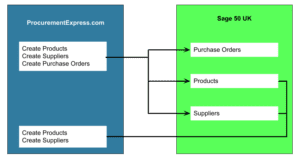
I first met Nathan Lustig while we were both part of the inaugural round of StartupChile. StartupChile was an innovative government program that invited foreign entrepreneurs to come to Chile and start a business. It is now one of the top rated startup incubators in the world, but when Nate and I got there, it was very much a boot-strapped affair.
Nate and I both moved on from our StartupChile businesses but he stayed on in Chile and is now the managing partner at the country’s most active seed-stage investment firm, Magma Partners. Over the last two years, they have invested in over 25 early-stage companies. “Some with more success than others”, as Nate describes it. Their big win thus far has been PropetySimple.com.
Having been a part of so many early stage companies, Nate has been in a unique position to see how these companies actually spend their arduous investments. According to his observations, most companies stick to their goals only for the first four months, after that it gets more difficult to stay on point.
Unique amongst many early stage investors, Magma allocates funds to companies on a month to month basis. This introduces a natural “air gap” to stop any catastrophic mistakes. Each company produces a six-month budget on top of their business plan.
Having to justify your spend to someone else (anyone else) is a simple hack which dramatically improves spending decisions. In fact, 70% of the time, if given the opportunity, anyone will prioritize personal benefits over those that may accrue to the company given the opportunity. Vendors have long known this and offer ‘free gifts’ to encourage a blinding eye when it comes to price comparison. Even entrepreneurs are not immune to these temptations.
How spending decisions are supervised is not the only trait of a poor spending decision. Startups receiving ‘Government money’ are often far more lax about how they spend it. While part of the government funded StartupChile program, we both saw newly minted entrepreneurs spend their grant money on laptops and phones rather than truly deploy it in an effective manner. If there is a sense that the money did not come from an individual, such as an investor, there is far less focus on how it is deployed. It seems like a ‘victimless crime’.
Founder wages is also an easy way to evaporate your precious investment. Founders can sometimes allocate themselves, perhaps commercially competitive, but disproportionately large salaries which can eat away a significant portion of their investment.
Mistakes are far more likely to come from inexperience rather than malice.
Another easy mistake to make in the tech world is to allow Google to gobble up your investment dollars in the desperate search for customers. Early stage entrepreneurs can lack the discipline to slowly search and discover the right route through the market using smaller sums, before doubling down.
A Facebook campaign of a couple of hundred bucks a month may be all that is needed to find that magic audience before you move onto spending more money.
Nate recognizes spend to fall into two categories. Pre and post market fit. It suggests taking a firm grip of every cent before the entrepreneur has proved that their product meets a market need. This is key. Having done that, it can sometimes be a challenge for the entrepreneur to switch gears and then know when to invest hard on channels which are working. Some Latin startups are not spending as fast as they should. They have a good product and it meets a need, but it is hard to move away from a scarcity mindset and go for growth. It sometimes takes years to achieve the right fit, so when it comes to scaling, you can also spend too slowly.



